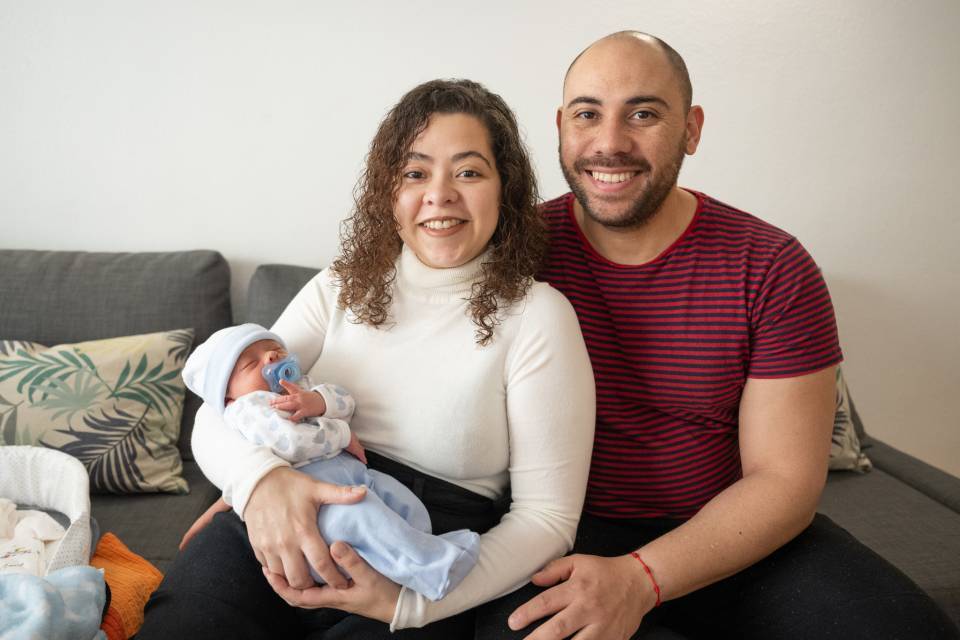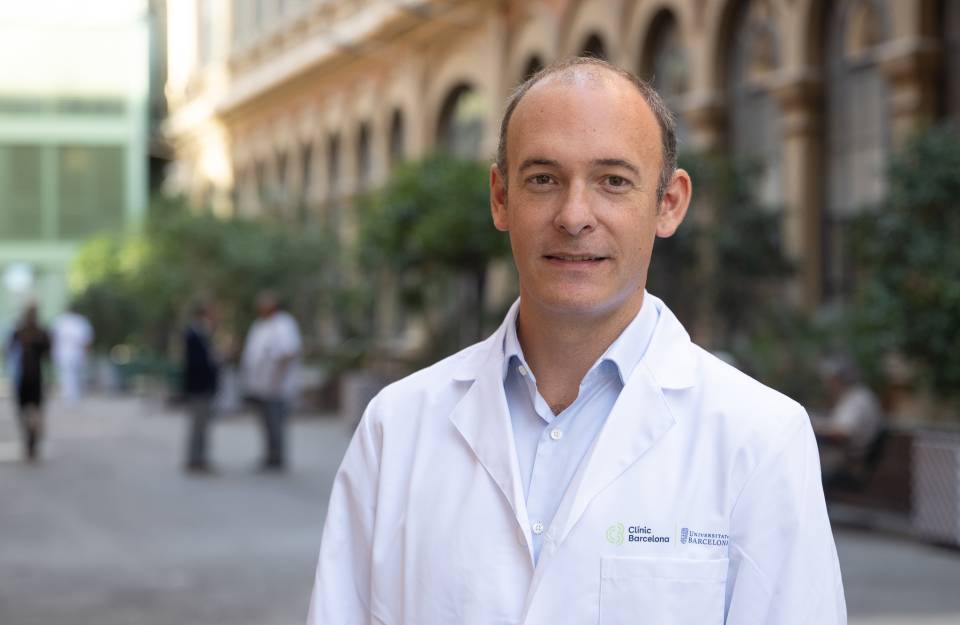The baby, Manuel, weighed 2.9 Kg and both the mother, Maira Montes, and the baby are doing well.The transplant took place on 4 April 2022 and was possible thanks to Maira's mother donating her uterus. The operation was led by Dr. Francisco Carmona, head of the Gynaecology Service, and Dr. Antonio Alcaraz, head of the Urology and Kidney Transplant Service.
This operation, which forms part of a research project that began seven years ago, aims to validate the feasibility of this surgery with the approval of five transplants in women with Mayer-Rokitansky-Küster-Hauser (MRKH) syndrome over the course of the project. This syndrome involves a congenital defect in the female reproductive system. Women with MRKH syndrome are born without a uterus and fallopian tubes. The project involves a team of over 50 professionals. This demonstrates the Hospital Clínic’s ability to organize a multidisciplinary team, the coordination of which represents an important step towards guaranteeing success.
Francisco Carmona, head of the Gynaecology Service at the Hospital Clínic recalls that, “Maira was once inside the uterus that is now inside her. It is a medical and scientific milestone that deserves great credit, and is the result of the expertise of an excellent team of professionals who made it possible. It is an absolute paradigm shift in medicine”.
Meanwhile, Dr. Antonio Alcaraz, head of the Urology Service points out that, “we can feel very fortunate about this milestone. This is one of the most complex surgeries that can be performed, and we have demonstrated, not once, but twice, that we are capable of carrying it out with very good results".
A highly complex surgery
In this transplant, several technological modifications were introduced with regard to the first uterus transplant. The team was equipped with an exoscope. This is a device that the hospital incorporated in 2022. It consists of a high-magnification lens that produces high-definition images. This device helped in the bench surgery, when the uterus is removed from a patient’s body and is being prepared for transfer, and in the implantation in open surgery.
Anatomically, the uterus is a highly complex organ. It has a network of small, fragile veins instead of visible, well-established veins as occurs in other organs. The vascularization of this organ increases 20-fold when a woman is pregnant, but it is poorly vascularized when she is not.
Manuel, the second baby born as a result of a uterus transplant
Two months after the surgery, Maria Montes had her first period and, after a few months, the fertility treatment began. Maira had a totally normal pregnancy, with the expected controls as a result of the transplantation. At 37 weeks, she had a caesarean section, since uterus transplant patients cannot give birth vaginally because it puts the organ and baby at risk. The caesarean section was performed by Dr. Francesc Figueras, head of the Maternal and Fetal Medicine Service, and his team. Four days after the caesarean section, Maira, Toño—the baby’s father—and Manuel were able to go home and start a new life. They have already expressed their desire to have a second child.
Two out of two
The first uterus transplant in Spain was performed in October 2020, and in March 2023 Jesús was born, the first baby born in Spain after a uterus transplant. The Hospital Clínic has performed two uterus transplants and in both cases a baby was born. The first baby in the world to be born after their mother received a uterus transplant from a living donor was delivered in 2014, in Sweden, at the Sahlgrenska University Hospital of the University of Gothenburg, with the team being led by Mats Brännström.




